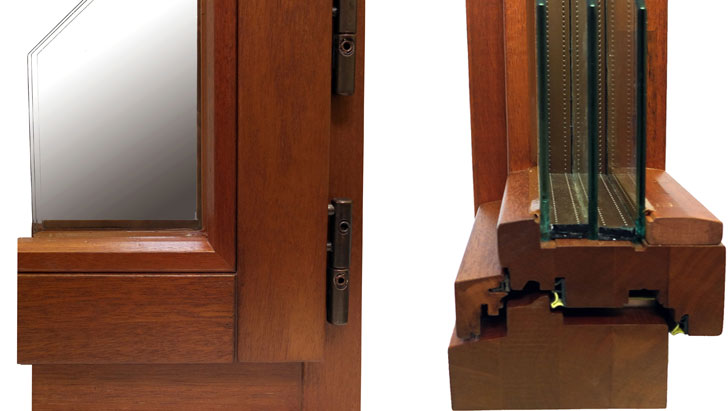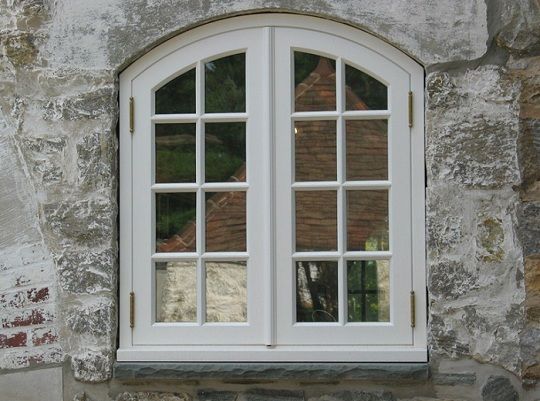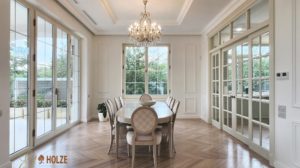There are serious reasons for changing windows. I don't think there is anyone who changes the windows in their house or flat just because of fashion or because they are bored with them. There is usually a very serious reason for this: heat and sound insulation or irreparable damage to the old windows. If we have to change them, we should at least be as well informed as possible and choose the best option for us.

Types of windows
There are four options to choose from: PVC, wood, aluminum and a combination of aluminum and wood. The sturdiest are aluminum and the least resistant are PVC. Both PVC and aluminum can have wood-mimicking foils applied.
I won't go into details about PVC and aluminum windows, because I am not a specialist in such materials and I don't want to be wrong. As far as wood is concerned, I can give you more information.
Wooden double glazed windows
Wooden windows can be made from a variety of wood species - softwood, oak, mahogany. The wood used can be solid or laminated. One-piece solid wood windows are increasingly rare because of the wood's instability. Laminated wood windows are much more stable, with very little variation in the wood's moisture content.
The problem with windows is the length of the elements. Dimensional variation can cause these elements to bend or twist. Laminated wood eliminates the defects in solid wood, and lamination produces a stronger and more stable wood derivative. Layering also contributes to thermal and sound insulation, as layers of wood with long but different grain layers make it difficult for the wood to penetrate.
The term thermopane refers to the window glass, not the time of frame material or the construction solution. Double-glazing is that sandwich of 2 or 3 layers of glass, with air-free spaces between them or filled with gases that prevent break-through so that sound and heat insulation is ensured. A double-glazed window is just the one with such glass trapped in the frame.
The window should be constructed in such a way that the water does not puddle. The slats must be inclined at an angle. It is precisely this construction solution that keeps the water out that makes the window last as long as possible.

Finishing windows to make them last as long as possible
Special weather-resistant and UV-resistant materials are used to finish window frames. The more the sun's rays pass through the finish, the less resistant it will be over time. Based on this, the most resistant frames are painted ones, where the wood fiber is completely covered, and the least resistant are those with a clear finish. In the case of clear finish, the least durable are fully transparent glossy windows, and the most durable are matte, semi-transparent.
The durability of wood window finishing materials ranges from 3-4 years to 10 years, sometimes even 12-15 years. That doesn't mean that after 10 years you should change them. This is the time after which the first cracks are likely to appear. To prolong the life of your windows it is a good idea to have them serviced every 2 years. This means washing them and applying a maintenance oil (available in almost all window shops) with a cloth or spray. The elements will eat from this layer and the finish will be protected.
The durability of the finish depends very much on weather conditions. For example, in the same house, windows on the side of the house that is more exposed to rain and wind will be less resistant than those on the more sheltered side. It is therefore very difficult to obtain a guarantee from varnish and paint manufacturers. And if you do eventually get one, it's a real book, with instructions on window construction solutions and finishing technology.
If the windows of old houses cannot be salvaged, they can be replaced with wood-framed double-glazed windows. There are companies that reproduce the original windows exactly, even if there are arches, double glazing or other construction details. So there is no excuse for old buildings to be mutilated.

I hope these few guidelines will help you when you want or need to change your windows. At least, don't start from scratch in this endeavor.

































There were some pretty serious errors in the article but the most glaring ones are in the paragraph below:
"As is well known, solid wood has dimensional variations depending on atmospheric conditions (temperature and humidity) and, at large sizes, it can bend. Laminated wood has no such problems. It is made from layers of timber arranged perpendicular to each other and glued together. The result is a wood derivative that is very strong and stable over time."
Wood varies in size only due to humidity. Temperature does not affect it if the humidity remains constant. Variation in size becomes a problem with joints that have not been made with this in mind. Bending occurs when the joinery has not been designed correctly, when there are large variations between the humidity inside the house and outside and when the wood used has not been selected, seasoned, cut or finished properly for the joinery.
Laminated wood profiles do not completely solve the above problems but they do help dimensional stability. In addition as you can see from the pictures in the article unlike plywood laminated profiles for joinery have all layers of wood fiber in the same direction. It is not correct to state that "it is obtained from layers of timber arranged perpendicular to each other and glued together" .
Thanks for the clarification. Regarding the dimensional variation of the wood, I was referring to atmospheric conditions by saying "temperature and humidity". You yourself say that temperature does not affect if humidity remains constant. So together, temperature and humidity can produce dimensional variation in wood.
Regarding the laminated wood joinery profiles, you are right and I will make the necessary modification.